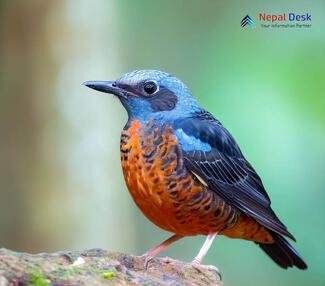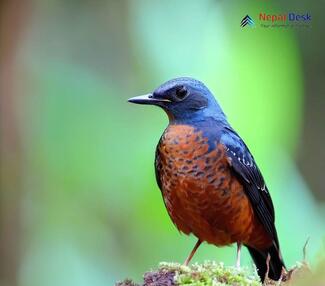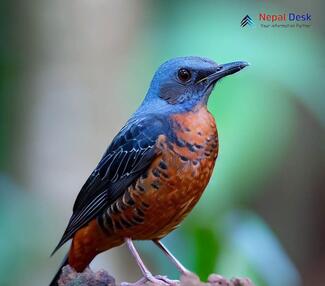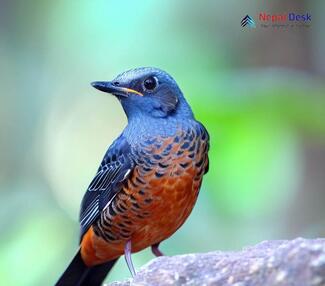Nestled in the picturesque landscapes of Nepal, where diversity in flora and fauna flourishes, you’ll find a captivating species of bird known as the Chestnut-bellied Rock Thrush (Monticola rufiventris). This vibrant creature not only fascinates bird lovers and ornithologists but also contributes significantly to the rich biodiversity of the region. In this article, we will delve into the intriguing world of this beautiful bird and unravel what makes it so special.
Appearance and Physical Characteristics
The Chestnut-bellied Rock Thrush is a medium-sized bird with distinct sexual dimorphism. Males display a deep blue color on their upperparts, with striking orange-red markings on their chest and underparts. Their characteristic rusty color on the belly is what gives this species its name. The females, on the other hand, boast a modestly patterned brown plumage with faint streaking.
Habitat and Distribution
Native to central Asia, the Chestnut-bellied Rock Thrush predominantly resides in Nepal's high-altitude regions, typically between 2000-4000 meters above sea level. Moreover, these birds inhabit areas dominated by Rhododendron forests, steep rocky cliffs, shrublands, and open coniferous forests.
Behavior and Diet
True to their name, these birds are often found perched on rocks or lower branches of trees. Acclaimed for their elusive nature, they tend to be more active during dawn or dusk. With a diet primarily composed of insects such as beetles, crickets, grasshoppers, moths, ants, and spiders — they showcase excellent aerial agility while hunting down their prey.
Breeding and Nesting Habits
The Chestnut-bellied Rock Thrush exhibits monogamous breeding behavior. During the breeding season, which usually lasts from April to July, males are known to put on stunning aerial displays to woo their female counterparts. Nests are typically constructed in the crevices of rocks or well-concealed tree cavities, ensuring that the hatchlings are protected from predators.
Conservation and Significance
With its delightful presence, the Chestnut-bellied Rock Thrush is a symbol of Nepal's rich avian diversity. Recognizing its value for eco-tourism and biogeographical research, it is essential to conserve this magnificent bird. Preserving its habitat through sustainable practices and encouraging responsible wildlife tourism are crucial steps in ensuring the continued existence of this charismatic species.
In conclusion, the Chestnut-bellied Rock Thrush adds a splash of color and charm to the already spellbinding Nepali wilderness. As we continue exploring Nepal's unparalleled beauty and biodiversity, let us appreciate these bright gems hidden in its forests and strive to protect them for future generations to admire.




